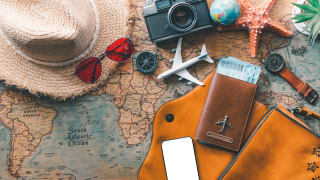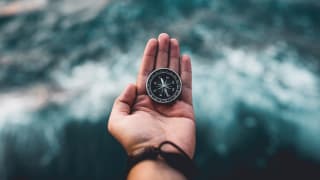Creating the trans-national cultural tourism strategy of the future
Is collaboration the key to recovery, and in the even longer-term, to being a good global citizen? We spoke to Ivan Eskildsen, Minister of Tourism for Panama, to understand how their new strategy connects tourism with conservation and how Panama is planning to work with their neighbours to create a cohesive cultural heritage strategy.
Firstly, congratulations on launching your new five-year tourism strategy. It’s great to see that sustainability and heritage play key roles in this. Would you be able to outline what you’re hoping to achieve with your strategy?
Everything begins with a vision. We’re shooting to become a world-class, sustainable tourism destination thanks to the extraordinary wealth of our natural and cultural diversity and the quality of our services. We’re aiming for a real transformation of our destination. We believe that Panama has a truly unique, untapped potential that has not been developed.
At the heart of the strategy, we’re reactivating this economic model that was developed by a scientist over twenty years ago and in this model, it’s all about the synergy that is created between the conservation efforts, research, and tourism - how a discerning traveller that appreciates the authenticity of nature is a driver that can help sustain conservation efforts and research. The beauty is that if these parts go together as they can, then we have a truly differentiated tourism experience because our natural and cultural heritage is what Panama is. No one can replicate the Panama Canal, or the history behind the Canal, or our beautiful, paradisial islands and everything that’s truly unique from our country.
Behind this Tourism Conservation Research strategy [TCR], we have the opinion of scientists saying how truly diverse and unique Panamanian nature is, so it’s about making this a reality and connecting in the private sector into our strategy with the proper training. That’s our role as the Authority of Tourism in Panama.
Dr Hana Ayala, the original proposer of the TCR strategy, mentioned at the time that Panama was an unparalleled research laboratory and a mega reserve of research knowledge for deciphering the past and planning the future. This is how important and powerful Panamanian nature and culture can be. It even goes beyond tourism – the NASA Earth Observatory mentioned in an article that the emergence of the Isthmus of Panama over three million years ago when Panama connected America was the most important geological event in the past sixty million years. Two oceans were created where there was only one, so the currents of the oceans were changed, the climate of the Earth was changed, and even though we’re such a small country, we impacted global diversity. It’s the most important geological event since dinosaurs became extinct in Europe.
Tourism will benefit greatly from the execution of this strategy, but we’re also talking about nation branding here. We’re building the foundations here, and at the heart of our brand is this Tourism Conservation Research strategy. We’re truly creating something that has such a wealth of interesting research for today’s travellers.
You mentioned that this is a continuation of a plan that was originally started 20 years ago. How has the situation changed between now and then?
Each thing has its own time. When this was developed over twenty years ago, it was in many ways ahead of its time, and I think it has been waiting for the right time to be bought back into the light. It came to us casually, and once we started digging into the strategy, we really thought this is what Panama needs to go to the next level – and not only in tourism, but in many other sectors.
We invited Dr Ayala, the creator of the concept, to meet with President Laurentino Cortizo back in February, and our President fully endorsed the idea. I sat down with the Minister of Environment, the Minister of Culture who are members of the TCR alliance, together with Secretariat of Science, Technology, and Innovation; the four of us are forming now a TCR Alliance committee. And just a few weeks ago the President signed a decree formally reactivating the strategy after twenty years. We now have the President’s full endorsement in an official decree and a true nation strategy that has tourism as a driver for other areas that can – and will! – benefit from this strategy. This is very much about pulling together efforts and resources as a team and it couldn’t be more timely. Today we require audacious and out-of-the-box thinking. We’re very confident in betting on this differentiation strategy as something that’s truly different from other nation strategies. It gives us a unique advantage in what is a very competitive environment.
Congratulations on getting the endorsement! You were planning your sustainable strategy before the pandemic, and it’s great to see that you’re continuing with a green re-set still. What would be your advice for someone else looking to create a resilient future for their place?
I think that this pandemic is probably the way nature has obligated us to look inwards. First, each individual in the planet has been facing various different forms of quarantine or lockdown and in this time, we’ve been able to look inwards. This introspection is also true as a nation. We’ve been able to look inwards and know ourselves better. As a nation, I think this is the time where we have been able to look at our true nature, look at what we are, what our strengths are, and our true differentiating aspects.
If I were to give advice, this is what I would focus on. Look inwards, because especially as far as tourism is concerned, today’s travellers are looking for authenticity. I’m a believer that everyone has something unique to show. To parallel the individual and the nation again, each of us has a skill that we can provide society, and so each country has a vocation, something unique that can be shown to the world. This is the right time to do that introspection.
The ultimate goal, I believe, is for a trans-national heritage tourism product. How would this work?
We recently had a panel of Ministers at the Panama Experience Expo and this was part of the topic that we discussed at that time. We need to understand we can pool our resources together because in times of great difficulty, more collaboration is needed. Of course, this is true at any time, but definitely more so in these difficult times.
When we look to how we can work with our neighbours, we discover how we can position ourselves not only as an individual nation brand, but also as a regional brand - especially when it comes to sourcing travellers from countries who are further away. Whether it is the UK, Europe or Asia – anything that implies crossing an ocean means that a traveller is more likely to visit several countries instead of just one. So how can we pool our resources to create a regional brand? We have some very unique aspects in our region, so the broader scale goal is to understand how we can use those to create a compelling regional brand that tells a connected story of our trans-national cultural heritage.
What would be the perfect outcome for the project? A gold standard ideal that you’d be hoping to achieve?
The panel has already had its first fruit; the panel concluded on creating a committee on sustainable conservation and research into our natural and cultural heritage so we can focus on these areas. The gold standard you mentioned would be on this strong regional strategy where each individual country has their role – each country has something unique that they can only provide. And when a true synergy is created, one plus one is usually more than two. In the case of Panama, we’re a natural hub. Ever since we emerged over three million years ago, we’ve been serving the world as a transit area and a place for encounters. Each country in the region has something that can be used as a service to the world if we pool our resources together.
How else do you think countries in Latin America can collaborate in their recovery to create that stronger future?
It’s very much about how we can create synergies. If you take the UNWTO’s idea of how we have to embrace change and how this pandemic has accelerated certain changes that have been manifesting for the past years… We have to embrace that change and then work together as a brotherhood. Older brothers help younger brothers, and everyone can chip in or provide their own support to the broader effort. We start by looking at our closer neighbours to see how we can connect and where each can provide as a helping hand and thus expanding that chain of experiences and collaboration.
I think looking towards nature as a great teacher is crucial. The experience we can share with another nation would be to look inwards and extract what those truly differentiated elements and strengths of your country can be and how that can be complemented by your neighbours. And once we get to know our neighbours better, we can also understand how they can complement our own weaknesses to start to build towards a more harmonious future.
Thank you for sharing that with us, Ivan.
Ivan Eskildsen will be sharing Panama's story at City Nation Place Latin America & Caribbean. Find out more about the event here.
Related reading:
Can place branding save the world
Pura Vida: Costa Rica's brand essence | Place Brand of the Year winner, 2019









